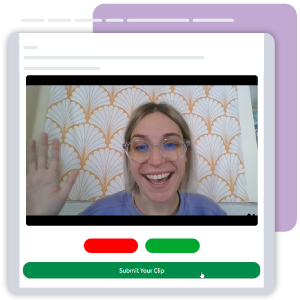Nonprofit Technology & Fundraising Blog
Subscribe to our mailing list

July 11, 2023 | Donor Engagement, Thanking Donors
Donor acquisition is often a keystone of any fundraising strategy. Garnering interest in your cause and recruiting new audiences to support you is a worthwhile investment. However, the cost of acquiring new donors is significantly higher than retaining existing donors, so donor retention is often a more effective fundraising tool.
But that’s not to say donor retention is an easier objective. The Association of Fundraising Professionals (AFP) has found that only 19% of first-time donors will give again. Still, if you can persuade a first-time donor to give just one more gift, reports show that 63% of donors who contribute a second gift will continue to donate. Here are some essential strategies you can use to help you secure second gifts from your first-time donors.
Nonprofits often hesitate to send follow-up solicitations too closely to the most recent gift a donor has made. Recency, however, is one of the top predictors that a donor will make a gift. There is a small window of opportunity after a first-time gift that is essential to the donor journey. This period lasts about 90 days, and your new donors need to hear from you within this time frame.
There is another reason it’s critical to minimize the gap between your first and second ask. One of the top reasons donors discontinue giving to an organization is because they’ve forgotten that they ever gave in the first place. This is especially true if your donors donated for a reason that had little to do with your organization:
Don’t give these donors time to forget about your organization or their support. Make sure you follow up soon after their initial gift and reach out often.
Regardless of whether or not you implement any other strategies, thanking your donors, first-time or otherwise, should be your top priority after receiving a gift. It is an essential step to creating a last and thriving relationship with your donors. It also happens to be highly effective in donor retention. Studies show that donors who are thanked within the first 48 hours of making a gift are significantly more likely to be retained.
According to Philanthropy Daily, first-time donors have an average 18% retention rate, however, this number jumps to 38% when the first-time donor receives a hand-written thank-you letter.
Want to personalize your own thank you in a unique way? Consider sending a personal video message to your donors with the ease of DP Video.

While a thank-you note is vital, you can probably skip the welcome packet, at least for now. This may be a better-suited touchpoint for when your donor has become more acquainted with you and your organization. Instead, keep your communication short, simple, and sweet, and don’t forget to personalize it. Many CRMs make it easy to automatically merge your donor and gift details right into pre-written templates so you can get your thank-you letters and emails out in a matter of minutes.
Donors, especially new donors who may not be heavily invested in your cause yet, often want easily digestible content. Newsletters, lengthy emails, and welcome packets may not be the best way to reach this audience. Instead, think of shareable content that can be communicated in a few sentences. You can share via social media, emails, videos, your website, and even texts.
Shareable content ideas:
Remember, this is about keeping your organization on your donor’s mind. It’s also helpful to stay on brand, so your organization becomes easily recognizable to your new supporters.
Need help creating consumable content? Try out Chat GPT. Just make sure to provide details like the type of voice you want (serious, light-hearted, etc.), length, and the information you want to share. Don’t forget to edit!
Maybe your new donors are not ready to give again, and that’s ok. Invite them to get involved with your organization in other ways. Volunteering is an excellent way for new supporters to become familiar with your cause and your organization. If you successfully cultivate them as a volunteer, you also increase your chances of retaining them as a donor. Over 70% of volunteers make donations to the causes they support. Brainstorm with your team and come up with some non-monetary ways a person can support your cause.
Non-monetary support ideas
It may be time-consuming, but understanding your donors’ motivations is essential to successful fundraising. The most effective method is simply to talk to them, whether that be in person or by phone. A phone call with every donor may be unscalable, but there are plenty of tools to help you along the way.
You’ve done a lot of hard work to acquire a new donor; push a little further to help your organization retain this donor and keep a loyal supporter. Second gifts are often just as hard to come by as first-time gifts, but they can be significantly more rewarding as they are indicative of a donor who wants to stick around and help your cause. If you need help crafting the perfect thank-you message, download your free copy of the Digital Donor Thank You Kit, available below!
Follow us on social!